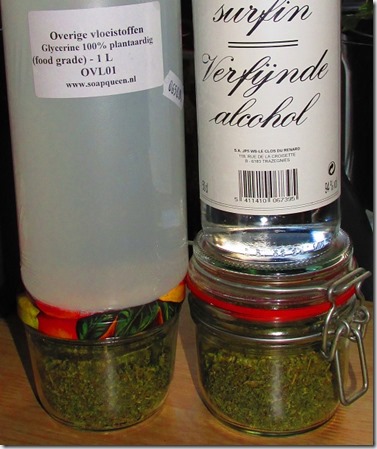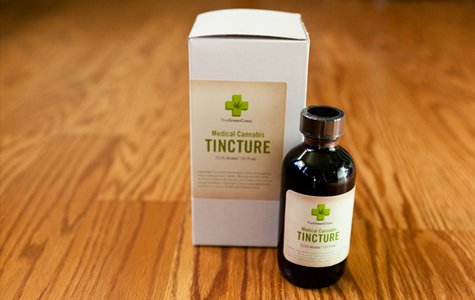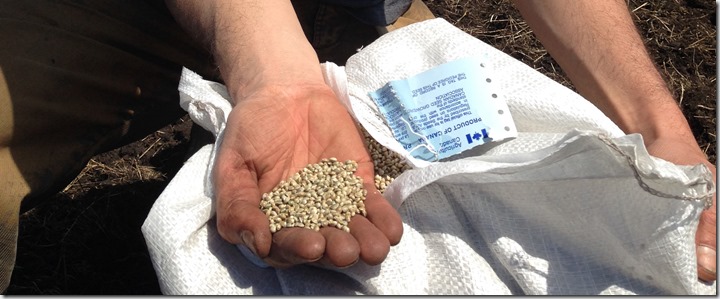By Owen Smith
In the late nineteenth century, cannabis tinctures were widely prescribed for analgesic, sedative, and narcotic purposes and by some accounts it was used as the primary pain reliever until the invention of aspirin[i]. Sativex is a modern version of this approach, a sublingual cannabis tincture spray (nabiximols) produced in England by GW Pharmaceuticals and licensed to Bayer Pharmaceuticals. It’s now available by prescription in Canada for MS, neuropathic pain, and as an adjunctive treatment for cancer patients.
A nearly identical product produced by the VICS (Vancouver Island Compassion Society) called “Cannamist” has been available to their members for over ten years. The simple procedure of soaking cannabis in alcohol is no secret.
In simple terms, a non-polar solvent (ex. butane, water, olive oil) is what is widely used to extract oils in the food and health industry. Alcohol is a polar solvent meaning it will extract some of the carbon-based molecules and other ionic compounds from the plant, resulting in a wider spectrum of extractives from the material (including chlorophyll, cellulose, and waxes). It is preferable to separate the trichome heads from the plant bulk first to eliminate the number of non-medicinal compounds and sometimes the potentially harmful contaminants, that will be infused into the alcohol.
 A standard ratio for dried plant tinctures is 1 gram for every 5 milliliters of alcohol. Higher percentage alcohol will extract more compounds, creating a stronger tincture. This along with the length of time the solution is left to macerate, in a cool dark place, will vary the potency of the tincture. 4-6 weeks is recommended but 2 weeks may suffice in an emergency. Shake the jar once a day. When your satisfied with the potency, any plant material can be filtered out and the solution stirred before being pouring into bottles for administration.
A standard ratio for dried plant tinctures is 1 gram for every 5 milliliters of alcohol. Higher percentage alcohol will extract more compounds, creating a stronger tincture. This along with the length of time the solution is left to macerate, in a cool dark place, will vary the potency of the tincture. 4-6 weeks is recommended but 2 weeks may suffice in an emergency. Shake the jar once a day. When your satisfied with the potency, any plant material can be filtered out and the solution stirred before being pouring into bottles for administration.
Due to many the conditions or medications for which alcohol is contra-indicated, the V-CBC (where I learned to prepare cannabis), has long avoided using alcohol altogether. They have recently Instead they are using a similar process over a longer time-period using Glycerin, that creates a sweet tasting substitute.
 A spray or drop of tincture under the tongue will absorb quickly into the bloodstream through the mucosal membrane of the mouth. Although some will probably be swallowed, most will avoid the gastro-intestinal tract where the medicinal compounds are broken down by the liver. Administered using a dropper, one can monitor very closely their adequate dose.
A spray or drop of tincture under the tongue will absorb quickly into the bloodstream through the mucosal membrane of the mouth. Although some will probably be swallowed, most will avoid the gastro-intestinal tract where the medicinal compounds are broken down by the liver. Administered using a dropper, one can monitor very closely their adequate dose.
In American states where dispensaries are licensed, Cannabis Based Medicinal Extracts (CBMEs) are screened for safety by certified third party inspectors like Steep Hill Lab, in California, Colorado and Washington and SC Labs in California. These private laboratories have assisted dispensaries in raising the standard of medicinal cannabis products. CBDscience LLC has developed three distinct cannabis tinctures: one “High CBD and low THC (4:1 ratio),” one “THC and CBD (1:1 ratio),” and one “high THC and low CBD (20:1 ratio).”
Tinctures are one of the many extracted cannabis products that are currently prohibited to patients and producers under the Canadian Marihuana for Medical Purposes Regulations. Please support the case for medicinal cannabis extracts that is headed to the Supreme Court of Canada by visiting, contributing and/or sharing the fundraising campaign.
http://www.gofundme.com/RvSmith
[i] “History of Cannabis”. BBC News. 2 November 2001.
(article appeared first at LiftCannabis)




